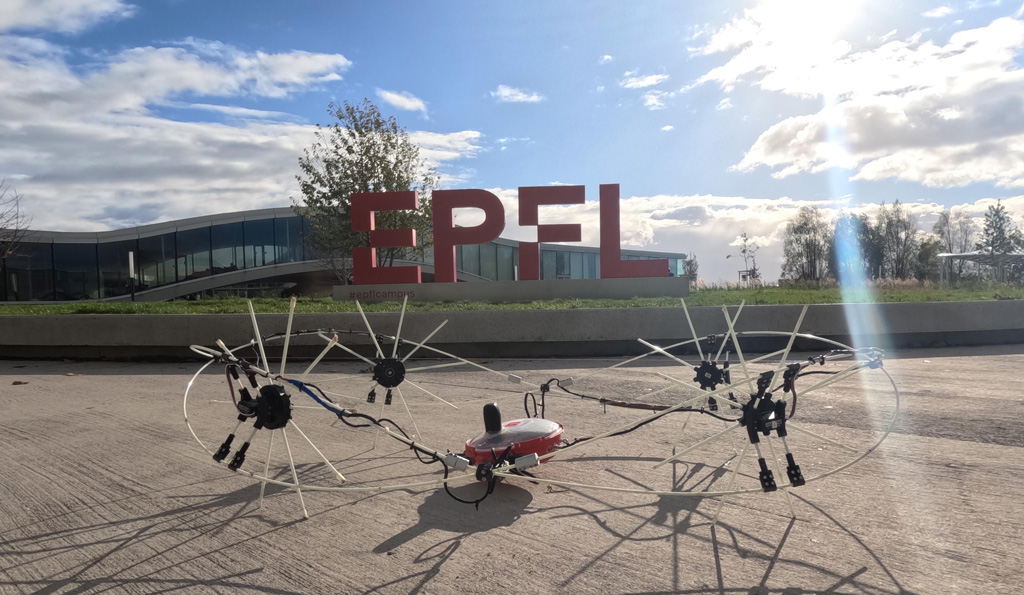
Researchers from the CREATE Lab in the School of Engineering at the Ecole Polytechnique Fédérale de Lausanne (EPFL) have developed a bioinspired robot that can traverse diverse environments by changing its form on the fly, creating a new paradigm for robotic locomotion and control in the process.
GOAT (Good Over All Terrains) can spontaneously morph between a flat ‘rover’ shape and a sphere as it moves. This allows it to switch between driving, rolling and even swimming, all while consuming less energy than a robot with limbs or appendages.
‘While most robots compute the shortest path from A to B, GOAT considers the travel modality as well as the path to be taken,’ Josie Hughes explained. ‘For example, instead of going around an obstacle like a stream, GOAT can swim straight through. If its path is hilly, it can passively roll downhill as a sphere to save both time and energy, and then actively drive as a rover when rolling is no longer beneficial.’

To design their robot, the CREATE team took inspiration from across the animal kingdom, including spiders, kangaroos, cockroaches and octopuses. The team’s bioinspired approach led to a design that is highly compliant, meaning it adapts in response to interaction with its environment, rather than remaining rigid. This compliance means that GOAT can actively alter its shape to change its passive properties, which range from more flexible in its ‘rover’ configuration, to more robust as a sphere.
Built from inexpensive materials, the robot’s simple frame is made of two intersecting elastic fibreglass rods, with four motorised rimless wheels. Two winch-driven cables change the frame’s configuration, ultimately shortening like tendons to draw it tightly into a ball. The battery, onboard computer and sensors are contained in a payload that weighs up to two kilograms that’s suspended in the centre of the frame, where it’s well protected in sphere mode – much as a hedgehog protects its underbelly.
CREATE Lab PhD student Max Polzin explained that compliance also allows GOAT to navigate with minimal sensing equipment. With only a satellite navigation system and a device for measuring the robot’s own orientation (an inertial measurement unit), GOAT carries no cameras onboard: it simply doesn’t need to know exactly what lies in its path.
‘Most robots that navigate extreme terrain have lots of sensors to determine the state of each motor, but thanks to its ability to leverage its own compliance, GOAT doesn’t need complex sensing,’ Polzin said. ‘It can leverage the environment, even with very limited knowledge of it, to find the best path – the path of least resistance.’
Future research avenues include improved algorithms to help exploit the unique capabilities of morphing, compliant robots, as well as scaling GOAT’s design up and down to accommodate different payloads. Looking ahead, the researchers see many potential applications for their device, from environmental monitoring to disaster response, and even extra-terrestrial exploration.

‘Robots like GOAT could be deployed quickly into uncharted terrain with minimal perception and planning systems, allowing them to turn environmental challenges into computational assets,’ Hughes said. ‘By harnessing a combination of active reconfiguration and passive adaptation, the next generation of compliant robots might even surpass nature’s versatility.’
The research has been published in Science Robotics.


